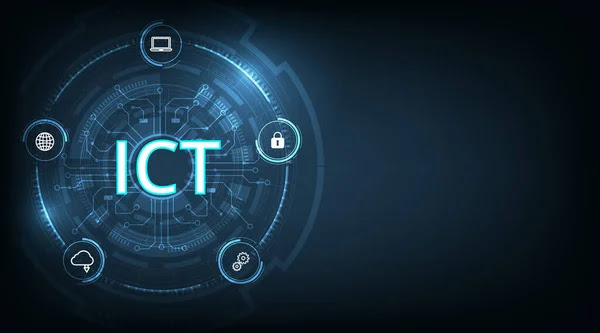In the digital age, information spreads like wildfire, and social media platforms serve as the primary breeding ground for the dissemination of information. However, amidst the sea of knowledge, lies a treacherous undercurrent - misinformation. Falsehoods, rumors, and deceitful narratives thrive, jeopardizing our ability to make informed decisions and impacting the fabric of society. To navigate this perilous landscape, we must equip ourselves with the tools to identify and combat misinformation. In this article, we embark on a creative journey to unravel the web of deception and uncover effective strategies to discern fact from fiction on social media.
1. The Misinformation Menace: A Deceptive Prelude
As we embark on our journey, let us first explore the roots of misinformation. Misinformation is not a new concept; it has existed throughout history in various forms. However, the advent of social media has given it wings, granting it unprecedented reach and influence. The viral nature of false information, coupled with the lack of stringent fact-checking mechanisms, has turned social media into a breeding ground for deception. From the humble clickbait headlines to the intricately orchestrated disinformation campaigns, we find ourselves entangled in a digital labyrinth of half-truths and outright lies.
2. The Art of Deception: How Misinformation Spreads
To combat misinformation effectively, we must first understand its modus operandi. Misinformation doesn't simply appear out of thin air. It follows a structured path to gain traction and infect minds. Understanding this path can empower us to disrupt its dissemination and prevent its proliferation. The article delves into the psychology of misinformation, exploring the role of confirmation bias, echo chambers, and social influence in perpetuating falsehoods. Additionally, we examine the role of bots and algorithms in amplifying misinformation and the responsibility of social media platforms in curbing this digital contagion.
3. Unraveling the Tapestry of Lies: Spotting Misinformation
Next, we arm ourselves with the tools to identify misinformation. Critical thinking emerges as a formidable weapon against falsehoods. The article delves into practical strategies to develop critical thinking skills and fact-check information effectively. From triangulating sources to evaluating credibility, readers learn how to navigate the information landscape with vigilance and discernment. We also explore the role of emotions in consuming and sharing information, and how we can avoid falling into the emotional manipulation traps set by misinformation.
4. The Warrior Within: Becoming a Misinformation Fighter
We've now gained the skills to spot misinformation, but the battle is far from over. Armed with knowledge, readers are encouraged to take action and become misinformation fighters. The article highlights the significance of responsible sharing and the need to curate our digital personas consciously. Engaging in constructive conversations and promoting digital empathy emerges as a powerful antidote to misinformation's divisive effects. Additionally, we explore ways to combat the spread of misinformation through community-led fact-checking initiatives and supporting media literacy programs.
5. A Beacon of Light: The Role of Social Media Platforms
While individuals bear the responsibility of discerning truth from falsehoods, social media platforms also play a vital role in shaping the information landscape. The article delves into the ethical obligations of social media companies to curb misinformation without stifling free speech. We discuss the importance of transparency in algorithms, the necessity of robust fact-checking mechanisms, and the role of user reporting in flagging misinformation. Furthermore, we explore the delicate balance between moderation and censorship, and the responsibility of platforms to prioritize truth over profit.
6. Future Horizons: Technological Innovations to Counter Misinformation
As we peer into the future, we uncover promising technological innovations that hold the potential to combat misinformation effectively. From advanced AI fact-checking algorithms to blockchain-based verification systems, we explore how technology can aid in dismantling the misinformation infrastructure. Additionally, we discuss the importance of interdisciplinary collaborations between tech companies, researchers, and policymakers to create a united front against misinformation.
7. The Legacy of Truth: Nurturing an Informed Society
In our final chapter, we reflect on the impact of our collective efforts to combat misinformation. We celebrate the success stories of individuals, communities, and organizations that have taken a stand against falsehoods and championed truth. Moreover, we emphasize the importance of continuous learning, adaptability, and resilience in an ever-evolving information landscape. The article concludes with a rallying call to nurture an informed society that values truth, critical thinking, and digital responsibility.
Conclusion: Beyond the Web of Deception
As our creative journey comes to an end, we've embarked on a mission to combat misinformation on social media. By unraveling the deception, honing our critical thinking skills, and engaging in constructive actions, we've become warriors in the battle for truth. Moreover, we've recognized the crucial role of social media platforms and technological advancements in building a robust defense against misinformation. As we move forward, let us remember that the fight against misinformation is not just about winning a battle; it's about safeguarding the very fabric of truth that binds us as a society. Together, we can navigate the web of deception, discern fact from fiction, and emerge victorious in our pursuit of an informed and enlightened world.

